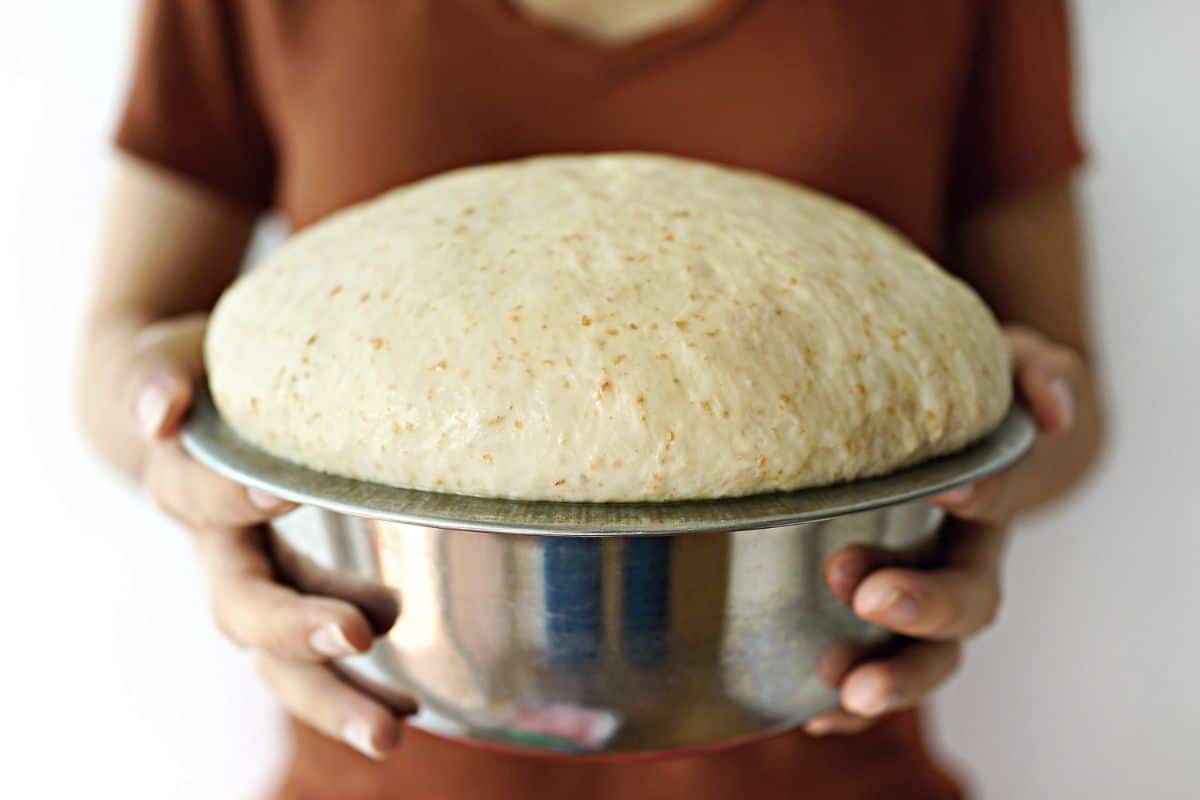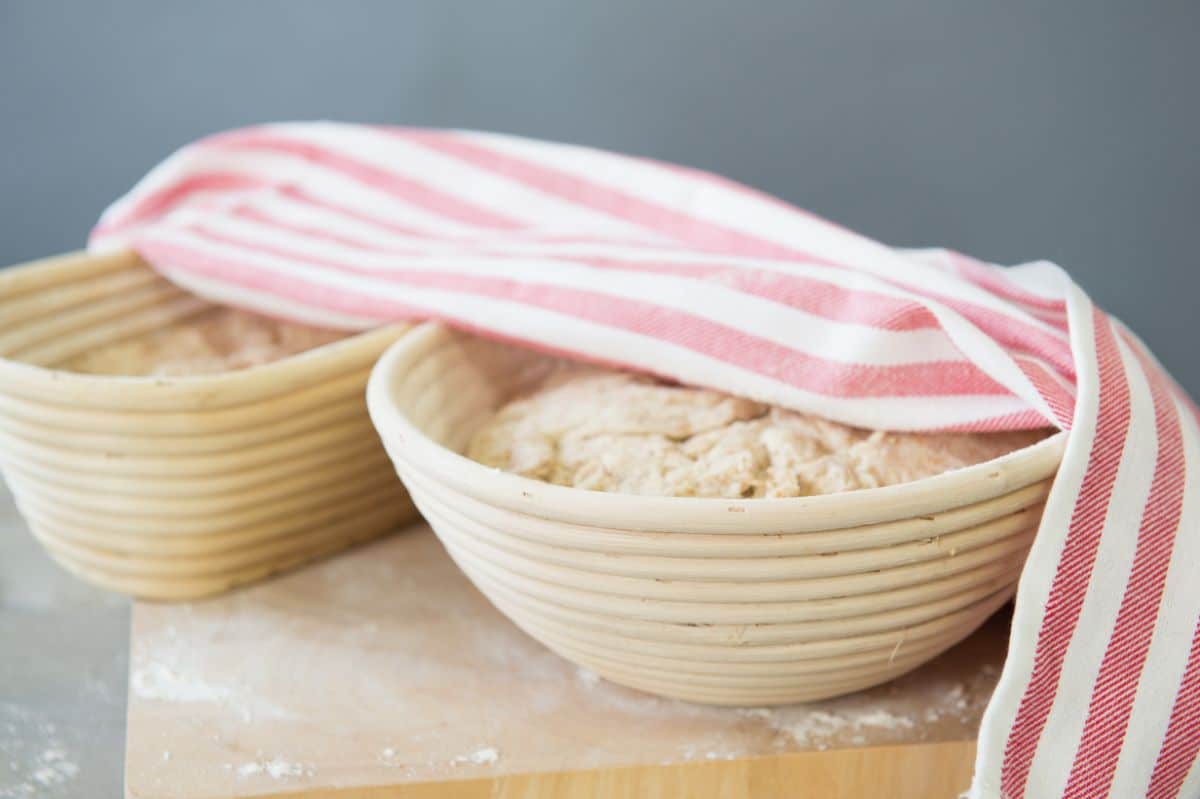If you are looking to make a loaf of bread and obtain that nice spongy, fluffy texture, you will need to use yeast. Without yeast, bread dough will never rise and all you’ll get is a block of baked dough that will be hard and dry.

But, does it matter how much yeast is used during the bread-making process? How much is too much and how much is not enough? In case you are tempted to think that too much yeast is not a problem, as you want to make that dough rise at impressive heights, the truth is that you will have to dose the yeast.
*This article may contain affiliate links. As an Amazon Associate, I earn from qualifying purchases. Please take that into account.
- Dutch oven
- Large mixing bowl
- Measuring cups and spoons
- Bread thermometer (fancy or a budget one)
- Scoring lame
Extra (nice to have):
- Kitchen scale
- Dough scraper and bowl scraper (yes, they are different)
- Cooling rack
- Baking stone (you don’t need a dutch oven if you use this)
👉Learn how to make bread and pizza with this awesome book.
How does yeast make the bread rise?
In order to know how much yeast to use when making bread dough, you will have to first understand the rising process triggered by the yeast. So, we add yeast to the dough in order to help it rise, but do you know how or why the dough rises?
First, let us start with the question of what is yeast. Yeast is actually a group of microscopic organisms that use simple sugars as their food source.
The sugars are broken down into simpler molecules, such as ethanol or alcohol, carbon dioxide, molecules carrying flavor, and energy.
This process of breaking down sugar is commonly known as fermentation. Of all these molecules, it is the carbon dioxide that helps the bread dough rise.
When the dough is left to leaven, this gas is formed, inflating the dough and making it almost double its size. This process is different depending on the type of dough prepared.
But, when it comes to bread, the yeast organisms are producing carbon dioxide as they feed off the available sugars. In the oven, this gas, now contained by the dough, will expand, which makes the loaf of bread grow even more.
As it bakes, the dough stabilizes and remains in the shape we all love.
But, believe it or not, the alcohol produced by yeast also contributes to the rising of the dough. While most people believe alcohol is responsible for the flavor of the bread, the truth is that it can also stimulate the rise of the dough.
When glucose is broken by yeast, the amount of ethanol and carbon dioxide is produced in an equal manner. In other words, equal parts of both of these substances are produced.
The only difference is that one is present in a liquid form, while the other is a gas. At room temperature, ethanol remains in the form of liquid.
But, when the dough is placed in the oven and faces high temperatures, ethanol begins to evaporate. During the evaporation process, ethanol also produces gas bubbles, which cause the dough to inflate as well.
Not everything is due to the yeast

While yeast plays an important role in the rise of the bread dough, this phenomenon is not happening entirely due to yeast.
Without gluten, present in flour, the gas bubbles produced by yeast would be all lost. Thus, the bread will be denser and harder.
So, we have to admit the fact that flour and yeast make a great pair and are more than capable of delivering the loaf of bread we all dream about.
Of course, the development of gluten is also due to yeast, but we still need to give it plenty of credit for allowing us to enjoy delicious bread slices.
The connection between yeast and gluten is even more important in the case of bread dough recipes that don’t involve kneading. In this case, the dough will be kept inside the fridge for hours in a row.
During this time, natural enzymes present in the flour will begin to break down the gluten molecules into smaller fragments.
Although it may seem hard to imagine, those tiny molecules are capable of forming gluten binds and networks, with the help of movements that are invisible to our eyes.
How much yeast can be used for the making of one loaf of bread?
Now you know that the amount of yeast you use will influence the way the bread dough grows, both when leavened and in the oven as well.
The quantity of yeast used for the making of a loaf of bread will not just influence how much the dough will rise, but also how fast it will rise. So, two packages of yeast will trigger a bigger rise rate and a faster rise of the dough than one single package, for the same amount of flour.
Still, this doesn’t mean that you can use as much yeast as you want, thinking that it will help you raise the dough to incredible levels.
Bear in mind that too much yeast can give an awkward flavor to the loaf of bread. Because the dough rises with the help of fermentation, the loaf of bread can end up smelling and tasting like a sort of fermented food, instead of having that pleasant flavor we all like about freshly baked bread.
So, to make sure that your bread dough rises sufficiently and maintains a pleasant flavor, use an adequate amount of yeast. For example, about 10 grams of dried yeast will suffice for 500 grams of flour. Of course, you should read the indications on the yeast’s package before using it.
Depending on the type of yeast you use, the amount of flour may vary a little. What you don’t have to worry about is adding a bit more yeast than recommended. As long as you don’t exaggerate with the yeast, nothing bad will happen.
But, do pay attention to how you use the yeast, as the bread dough may not rise under certain conditions.
For instance, if the microorganisms present in yeast are dead or dormant, if you used too cold or hot water to activate the yeast or when preparing the dough, you used too much salt or added it way too soon, or if the dough was not mixed sufficiently, there are chances for it not to rise as expected. So, make sure when preparing the dough not to do such mistakes and to respect the steps properly.
